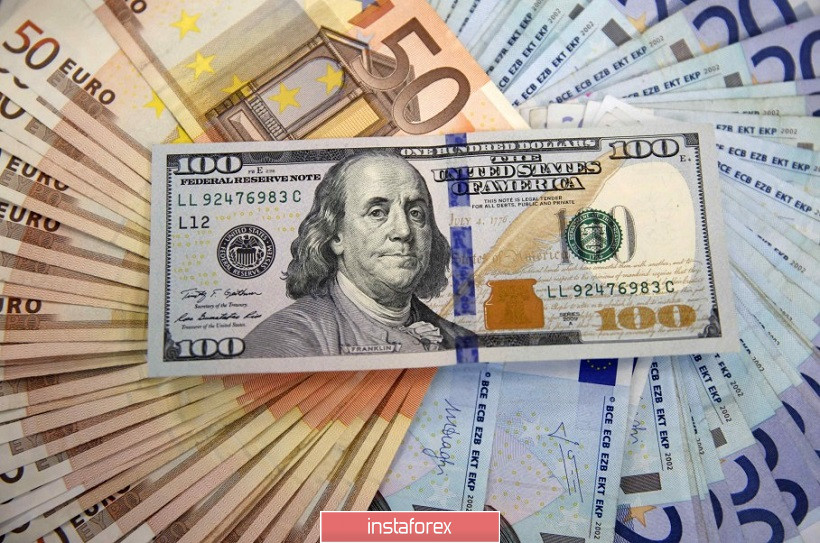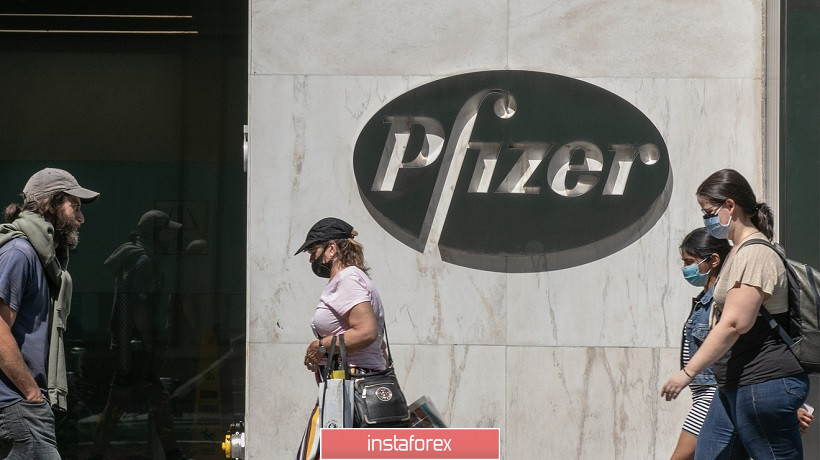Forex traders continue to play against the US currency. Simple tactics bear fruit, and in almost all dollar pairs - with the exception of the GBP/USD pair. The pound lives its own life and only focuses on Brexit, while ignoring the weakening or strengthening of the dollar. The greenback continues to lose its positions after a short-term correction in the remaining pairs of the so-called major group.
Take note that the US dollar has tried several times over the past few weeks to show its character and go into correction. Even against the euro. But the EUR/USD bulls are using the decline in prices as a good reason to open longs. As a result, the price only weakened by several tens of points for a short period of time, afterwards buyers pulled it to new heights due to their activity.

It happened this time too. Rather ambiguous data were published on the growth of the US labor market - Nonfarm. On the one hand, we saw a decline in unemployment and an increase in wages. But on the other hand, all other components came out in the red zone, which means they turned out to be below the forecast values. We are talking, in particular, about the growth rate of the number of people employed in the non-agricultural sector, in the production sector and in the private sector of the economy. The market decided that the glass is half full rather than the other way around, so it focused on the positive aspects of the release.
In addition, on the last trading day of the week, traders massively took profits after the pair soared to 1.2177 - this is the price high not only of the current year, but also of the previous one. Market participants did not hold back from opening trading positions over the weekend, afterwards they began to leave them en masse. The immediate reason for the dollar's growth was the news that the United States imposed sanctions against China because of the situation with Hong Kong. The new sanctions measures will affect at least 14 officials of the PRC. The sanctions will be imposed due to China's decision to remove four opposition members of the Hong Kong Legislative Council. The pair plummeted by almost 70 points amid a surge in anti-risk sentiment, dropping to the bottom of the 21st figure. The dollar has become temporarily in demand as a defensive asset.
Today, the EUR/USD bears tried to develop a downward momentum, but they met quite strong resistance from buyers as soon as they entered the area of the 20-figure. As a result, their attack failed: the notorious Chinese factor could not reverse the trend. First, according to some experts, the White House, under the sensitive leadership of Donald Trump, is deliberately increasing pressure on China before Joe Biden takes his place. The current head of state does not intend to leave American politics after vacating the Oval office, so his current steps must be viewed through the prism of this fact. Secondly, the above-mentioned personal sanctions are not able to shake the situation in the market, provoking an increase in anti-risk sentiment, especially in the light of Biden's election victory.
In light of these conclusions, demand for the US currency has declined again, while the euro has once again been in the spotlight. First of all, this is due to the growing interest in risky assets. Despite the second wave of coronavirus in Europe, traders are optimistic about the future, amid news of the start of mass vaccination against COVID-19. It will start on Tuesday in the UK. This process should start a little later in Europe, but the estimated time frame is calculated in weeks, not months. The European Medicines Agency is expected to approve a vaccine from Pfizer on December 29, and from Moderna early next year. If these drugs are approved, vaccination in the EU countries will begin in the second half of January. Such prospects push up risky assets, despite the increase in the number of cases in some EU countries.

Thus, the current fundamental background continues to contribute to the pair's growth. Corrective price dips can be used to open longs and the initial target would be 1.2177 (the 2.5-year high reached last week) and the primary target at 1.2200. This strategy will be relevant until Thursday, when the European Central Bank's final meeting for this year will take place. On the eve of this event, it is advisable to take a wait-and-see position, as the dovish rhetoric of the ECB members may exert significant pressure on the euro.





















